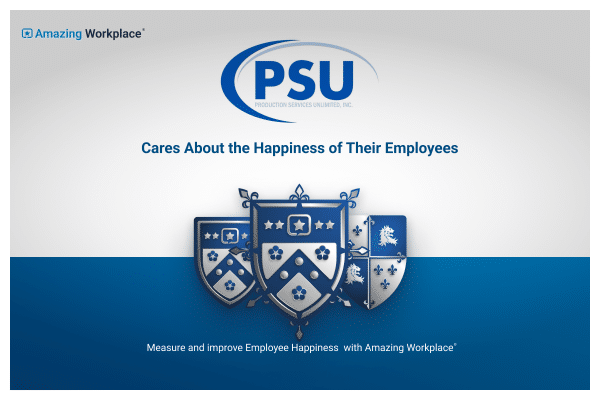Designing a Comfortable Workplace
The comfort of your employees is essential, not only for their productivity, but also for the overall cohesiveness of the office itself.

“It’s not the manager’s job to prevent risks. It’s the manager’s job to make it safe for others to take them.”
– Ed Catmull “Creativity Inc.”
Workplace ergonomics is the science of designing the workplace, keeping in mind the capabilities and limitations of the worker, and the best possible way for the business to function within its structure.
By definition, the word Ergonomics means “an applied science concerned with designing and arranging things people use so that the people and things interact most efficiently and safely.” It also refers to the design characteristics of objects (such as chairs etc) which result in efficient and safe use.
Essentially, it means the designing and arranging of things so that people can use them easily and safely, and the parts or qualities of something’s design that make it easy to use.
Poor worksite design leads to fatigued, frustrated and non-cohesive teams. This rarely leads to a productive worker, and certainly doesn’t lead to a productive workspace. Ultimately, it leads to lower productivity, poor product quality, and dissatisfied customers.
Keep in mind, we aren’t just talking about more comfortable office chairs for your staff here. There is a holistic view of an office that includes the function and structure of the place itself, as well as the inner workings all together that align well and add up to a more comfortable and functional space where efficiency and productivity can prevail.
Benefits of an ergonomic workplace
Washington State Department of Labor and Industries reviewed 250 case studies on the effects of ergonomics in a variety of settings. They found that ergonomics can have a profound impact on your organization, including the following benefits:
Reducing costs
By removing ergonomic risk factors, you can significantly reduce or prevent costly factors. Approximately $1 out of every $3 in workers compensation costs could be prevented — and don’t forget that indirect costs can be up to twenty times the direct cost of an injury.
Productivity
Work stations can be designed office-wide to include better ergonomic solutions that will often improve productivity. Allowing for good posture, less exertion, fewer motions and better heights and reaches, as well as the overall flow of business communications — for example, which department should be placed near to which, and where should one office be placed in relation to another, etc. These things can all make a huge difference in the designing of your workplace.
Employee Engagement
Employees notice when their health and safety are being taken into account. When employee comfort is made a priority in the company culture, an employee does not experience as much fatigue and discomfort during their workday, and it can reduce turnover, decrease absenteeism, improve morale and increase employee involvement.
Ways to Improve Office Ergonomics
Prioritize Positions
Ergonomic analysis can be done on a short list of priority positions first. These areas would be identified after a facility or office review, or a tour, noting any and all positions that have historically had higher safety issues or injuries.
Ergonomic Opportunity List
Put together a list of areas that could prioritize company resources in so that you can effectively and efficiently reduce risk by putting the appropriate controls in place. Surveys of employees could also illuminate areas of opportunity. Perhaps Joe in accounting has an idea that would streamline the whole operation by simply moving one office closer to another.
Evaluate
Once you’ve implemented any upgrades or improvements, take time to evaluate how effective it was. Did you see an uptick in productivity? Were there any financial benefits? Or was it a total flop and you need to go back to the drawing board?
Ergonomic Risk Factors
Here are some of the major ergonomic risk factors to keep in mind.
1. Task Repetition
A job is considered highly repetitive if the cycle time is 30 seconds or less. In other words, if it takes you 30 seconds to complete one round of the activity, then go into the repeated actions for round two of the same activity, then that is a highly repetitive job.
Many work tasks are repetitive in nature, and are frequently controlled by hourly or daily production targets and work processes. High task repetition, when combined with other risks factors such high force and/or awkward postures, can contribute to a potentially dangerous work environment.
2. Exertion
Many work tasks require high force loads on the human body. Muscle effort increases in response to high force requirements, increasing associated fatigue which can lead to injuries. And we’re not just talking about lifting very heavy objects all day. The U.S. Department of Labor concluded that Carpal Tunnel Syndrome was the “chief occupational hazard of the 90’s” — disabling workers in epidemic proportions. This is an example of repetitive activities (like typing or working with a mouse or phone cradled in the neck all day) combined with exertion and stress, combined with poor posture — all leading up to injury and discomfort.
3. Bad Posture
Awkward postures place excessive and repetitive force on joints and overload the muscles and tendons around the effected joint. Joints of the body are most efficient when they operate closest to the mid-range motion of the joint. Risk of injury or chronic conditions is increased when joints are worked outside of this mid-range repetitively or for sustained periods of time without enough rest or recovery time.
Summary
Designing your workplace is easier said than done, especially when you already have a campus that took years to build. It’s much harder to redesign, than it is to design from the ground up. But in the end, it’s a worthy activity since it can save your company a lot of pain and trouble, and the benefit of a more comfortable, productive workforce far outweighs the inconvenience and potential risk.


